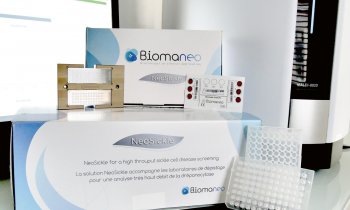A new nutrition guide: Green for fruits, red for fats
Do we have to create a food guide for people? The European Parliament already proposed this suggestion to protect people from getting cardiovascular diseases. This week experts will discuss the issue at the annual ESC Congress. They believe the UK traffic light system might help people keep more attention to nutrition

Is it really necessary to educate people in healthy eating? Yes, that is the opinion of experts who will meet at the Congress of the European Society of Cardiology taking place from August 30 to September 3 2008 in Munich. And in fact, this is not the suggestion of a small group of hypersensitive heart specialists. Even the European Parliament Heart Group has discussed the link between nutrition and cardiovascular diseases – and how labelling of food might prevent people from choosing products that will damage their heart and vessels. Cardiovascular disease is the number one killer in Europe, accounting for 4.3 million deaths and costing the EU over 192 billion Euros each year.
“Given the alarming rate at which obesity is progressing, especially among children, bringing with it other health related problems such as diabetes, hypertension and heart disease, it seems necessary to insist on giving consumers clear and understandable information in order to help them make better informed dietary choices,” explaines Professor Pedro Marques, Spokesperson for the European Association of Cardiovascular Prevention and Rehabilitation (EACPR), a registered body of the European Society of Cardiology (ESC), and speaker at today’s MEP Heart Group meeting.
Also the European Commission has already made the declaration of the amount of energy, fat, sugars, salt and saturates on food packaging mandatory. Nevertheless, there is no European legislation harmonising diverse national schemes. Consumers often find nutrition labelling confusing and sometimes even misleading.
“Front of pack labelling should allow consumers to know at a glance whether a product contributes to their health or not”, says Susanne Logstrup, Director of the European Heart Network (EHN). “To achieve this, simplified front of pack labelling of four key nutrients, energy, saturated/trans fats, sugars and salt, must be presented in an easy to understand way.”
The idea dates on the work carried out in the UK. The British people already have the opportunity to choose their food by a so called traffic light system. The quantity of nutrients are highlighted with a multiple colour coding, indicating clearly whether a product contains high, low or medium levels of sugar, salt, saturated/trans fats etc. The EHN calls upon the Members of the European Paliarment to improve the Commission proposal and put colour coding on mandatory front of pack in the Commission proposal and introduce mandatory back of pack labelling of the ‘big eight’ (energy, protein, carbohydrate, sugars, fibre, fat, saturated fat, trans fat and salt).
“Prevention experts of the ESC believe that the UK ‘traffic light’ system is an effective idea and should be supported at a European level” states Dr Simona Giampaoli, Chair of the Prevention and Health policy section of the EACPR. “The traffic light system helps consumers see at a glance whether the contents of a certain product are within a healthy limit. Food with a green light is the healthiest option and a red light warns that this product should not be eaten regularly.”
There are many issues for the MEP Heart Group to consider”, explains Mr Adamou, MEP. “Consumers demand and people need better information on labels; information that is clear, simple, comprehensive, and standardised. As Co-chair of the MEP Heart Group, I want labels that really make a difference. It would be useful to have mandatory front of pack signposting of four key nutrients that are colour coded."
“As health professionals, we, at the ESC, clearly see the need to adopt clear information in the front of food packages. We also need to educate consumers on the adequate amounts of sugar, salt and fat intake as well as healthy portion sizes,” explains Professor William Wijns, Spokesperson for the European society of Cardiology. “Obesity is being recognised as a growing and dangerous disease with a high cost on public health systems. It is urgent to achieve a harmonised common policy on labelling as soon as possible as part of a larger effort to raise awareness on the effects of unhealthy eating habits on our bodies and especially their link to increased risk of cardiovascular disease.”
26.08.2008











